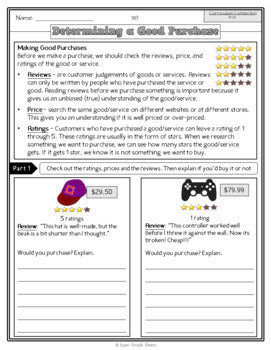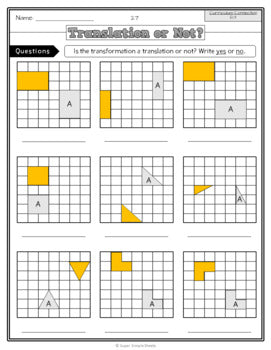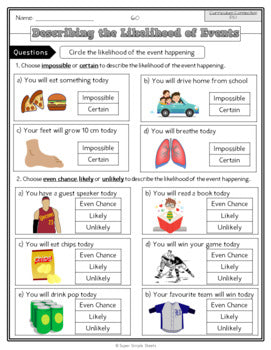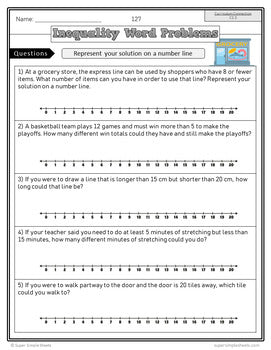Grade 4 - Full Year Math Bundle - Ontario New 2020 Curriculum
Grade 4 - Full Year Math Bundle - Ontario New 2020 Curriculum
Interested in a bundle? Shop below instead!
Couldn't load pickup availability
PRODUCT PREVIEW
Grade 4 - New Ontario Math Curriculum 2020 – This bundle covers all expectations in the Grade 4 - New Ontario Math Curriculum. Included are 990+ activity sheets for your students to learn the overall and specific expectations outlined by the Ministry of Education.
Check out each of the strands below to learn more about the resources included in this bundle. THIS BUNDLE INCLUDES BOTH GOOGLE AND PDF VERSIONS.
Strand B - Number (Number Sense and Operations)
- Composing and decomposing whole numbers to 10 000
- Using base ten blocks to represent numbers
- Counting money as base ten reinforcement ($100, $10, $1)
- Comparing and ordering numbers to 10 000
- Rounding numbers nearest 100 and nearest 1000
- Counting to ten by halves, thirds, fourths, fifths, sixths, eights, and tenths
- Fair sharing between 2,3, and 4 sharers
- Comparing, ordering and adding decimals tenths
- Understanding the relationship between fractions and decimals
- Round decimals to the nearest whole number
- Equivalent fractions
- Number line addition, subtraction, multiplication, division
- Fact Families – Relationship between multiplication and division
- Multiplication and division facts – 1 through 10
- Addition mental math strategies (adding in chunks, counting on, doubling, and more)
- Subtraction mental math strategies (adding up, counting back, subtracting in chunks)
- Multiplying and dividing by 10, 100, and 1000
- Standard algorithms – addition, subtraction, multiplication, division
- Estimating and solving addition and subtraction
- Arrays – Multiplication and Division
- Multiplication and division of fractions
- Repeated addition of fractions
- Ratios and unit rates
- 3 Unit Quizzes – Place Value, Numbers, Operations
Strand C - Algebra (Patterns, Equations, Coding)
- Repeating Patterns (different shapes, sizes, colours, orientations)
- Increasing/Decreasing patterns using all 4 operations (addition, subtraction, multiplication and division)
- Determining pattern rules
- Extending growing, shrinking, and repeating patterns
- Determining pattern core in repeating patterns
- Table of Values
- Creating and describing patterns using whole numbers and decimal tenths
- Graphing table of values
- Pattern Blocks
- Relationships between whole numbers and decimal numbers using number strings
- Solving using variables
- Balancing equations using all 4 operations
- Evaluating equations deciding if they are equal (balanced)
- Solve inequalities involving the addition and subtraction of whole number to 20
- Writing code
- Interpreting code
- Using loops in code
- Concurrent codes – writing codes for events that happen simultaneously
- 3 Unit Tests – 1 for each overall expectation
Strand D - Data (Data Literacy and Probability)
- Difference between qualitative and quantitative data
- Difference between primary and secondary data
- Collecting data for areas of interest
- Using tally marks
- Using frequency tables
- Interpreting bar graphs and multi-bar graphs
- creating pictographs, bar graphs, and multi-bar graphs
- determining the mean, median, and mode of data sets
- Creating and interpreting stem-and-leaf plots
- Creating an appropriate scale for a graph
- Creating and interpreting infographics
- Drawing conclusions about different sets of data
- Drawing conclusions about different visual representations (line graph, circle chart, double bar graph)
- Describing the likelihood of an outcome (impossible, unlikely, equally likely, likely, and certain)
- Using a probability line to decide the probability of an event
- Completing surveys with different populations (students vs adults) and comparing the results
- Predicting the mean, median, and mode of a data set based on the population
Strand E - Spatial Sense
- Right angles, lines of symmetry, and parallel and perpendicular sides
- Identify properties of rectangles (right angles, parallel and perpendicular sides, and lines of symmetry
- Reading and plotting coordinates in the first quadrant
- Describing translations and reflections of shapes on a coordinate plane
- Translating and reflecting shapes on a coordinate plane
- The relationship between metric units of measurement (grams and kilograms, metres and centimetres and millilitres and litres)
- Using metric prefixes to determine the relative size of different metric units
- Measuring lengths using appropriate tools
- Estimating lengths, mass, and capacity of different things
- Read analog clocks to tell time
- Solve problems involving elapsed time (minutes, hours, days, weeks, months, years)
- Using open time lines to solve elapsed time questions
- Identify angles as right, straight, acute, or obtuse
- Draw right, straight, acute, and obtuse angles
- Find the area of shapes using arrays
- Use the area formula to determine the area of rectangles
- Use the formula for area to determine the unknown measurement
Strand F - Financial Literacy
- Methods of Payment – Reading
- Methods of Payment – Questions
- Goods and Services
- Needs vs Wants
- Spending and Saving
- Introduction to Investing
- Investment Plan – Assignment
- Donating
- Consumerism – Need vs Want
- Consumerism – Need vs Want – Questions
- Counting Dollars
- Counting Coins
- Converting Cents to Dollars
- Counting Canadian Coins
- Making Change
- Counting Money (Adding Money Totals)
- Calculating Change Using $1
- Calculating Change Using $2
- Calculating Change Using $5
- Calculating Change Using $10
- Calculating Change Using $20
- Calculating Change Using $50 and $100
- Calculating Change Up To $100
- Giving Change Using Coins
- Adding Money Amounts
- Adding Multiple Items
- Providing Change to Customers
- Money Word Problems
- Determining a Good Purchase
- Financial Literacy Unit Test
This is a comprehensive unit that will save you hours of planning! It has been tested and found effective in helping students achieve the learning goals setup by the Ministry of Education in their new math curriculum.
Share






Great exercises to teach students at this level.
This is a must have for teachers. It’s easy to learn, follows all curriculum expectations and user friendly. This has become a staple to keep in my drive!
Great
Vast amount of exercises helping my kid to practice alot! My kid enjoys alot while doing these exercises. Appreciate your great work!
Comprehensive math package that saves me so much time.









